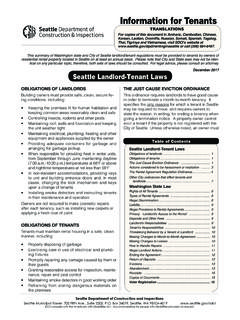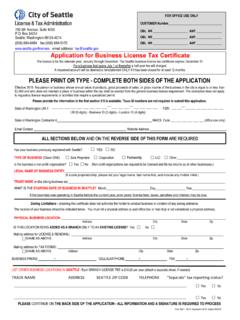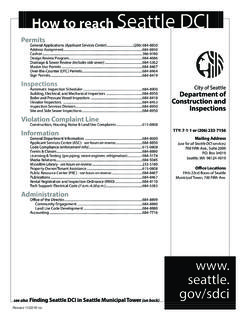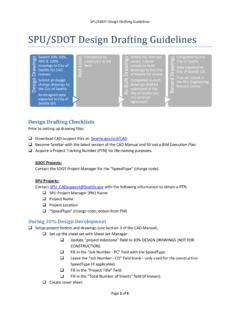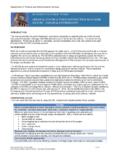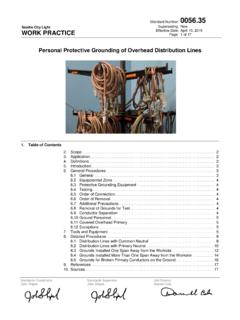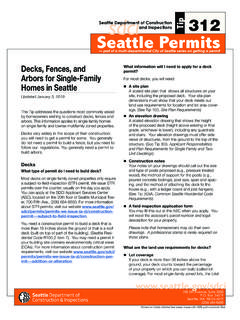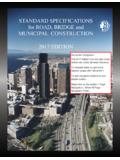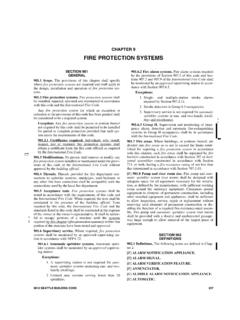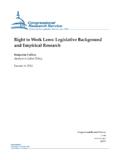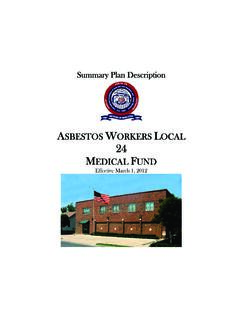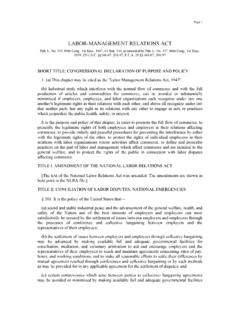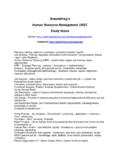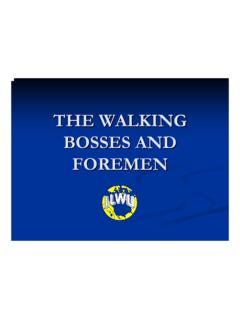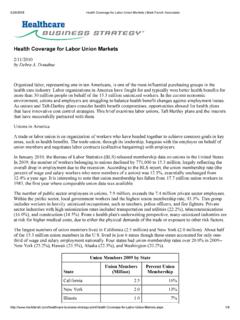Transcription of PSL Rules Draft - seattle.gov
1 seattle Office of Labor Standards / Minimum Wage Rules (Chapter 90) 03/31/15, amended 09/29/17 Page 1 of 7 seattle OFFICE OF LABOR STANDARDS seattle HUMAN RIGHTS Rules (SHRR) Chapter 90 Practices for administering minimum wage and minimum compensation rates for employees performing work in seattle ( Minimum Wage Ordinance) under SMC GENERAL PROVISIONS SHRR 90-001 Purpose SHRR 90-020 Practice where Rules do not govern SHRR 90-030 Construction of Rules EMPLOYMENT IN seattle SHRR 90-040 Employees who are typically based outside of the City and work in the City on an occasional basis EMPLOYER SCHEDULE DETERMINATION SHRR 90-045 Joint employers SPECIAL CERTIFICATE AND MINORS SHRR 90-050 Learners, apprentices, messengers.
2 Workers with a disability SHRR 90-060 Minors HOURLY MINIMUM WAGE AND MINIMUM COMPENSATION SHRR 90-065 Individual employee s medical benefits plan SHRR 90-070 Service charges SHRR 90-080 Two or more positions for the same employer EMPLOYER RECORDS SHRR 90-110 Payroll records ENFORCEMENT SHRR 90-120 Practice and procedures for enforcement of ordinance seattle Office of Labor Standards / Minimum Wage Rules (Chapter 90) 03/31/15, amended 09/29/17 Page 2 of 7 GENERAL PROVISIONS SHRR 90-001 Purpose These Rules (Chapter 90) govern the practices of the seattle Office of Labor Standards in administering requirements for minimum wage and minimum compensation under seattle Municipal Code ( the Minimum Wage Ordinance).
3 SHRR 90-020 Practice where Rules do not govern If a matter arises in administering the Minimum Wage Ordinance that is not specifically covered by these Rules , the Director shall specify the practices to be followed. SHRR 90-030 Construction of Rules These Rules shall be liberally construed to permit the seattle Office of Labor Standards to accomplish its administrative duties in implementing the Minimum Wage Ordinance, including providing technical assistance, determining if a violation has occurred and proscribing penalties and remedies.
4 EMPLOYMENT IN seattle SHRR 90-040 Employees who are typically based outside of the City and work in the City on an occasional basis 1. In general. Employees are covered by the ordinance for all time spent working within the geographic boundaries of the City. An employee who is typically based outside of the City and performs work in the City on an occasional basis is covered by the ordinance in a two-week period only if the employee performs more than two hours of work for an employer within the City during that two-week period.
5 SMC 2. Typically based outside of the City and performs work in the City on an occasional basis. An employee is typically based outside of the City and performs work in the City on an occasional basis if the employee works for an employer outside the geographic boundaries of seattle for more than 50% of work hours in a year; or over the course of the period of employment for employment that is less than a year. An employee who works within the geographic boundaries of seattle at least 50% of work hours in a year does not typically work outside of seattle or work in seattle on an occasional basis and is covered by the ordinance for all hours worked in seattle .
6 A. To track an employee s work over the course of a year, employers must apply any fixed, consecutive 12-month period of time, including January 1 through December 31; a tax year, fiscal year, or contract year; or the year running from an employee's one-year anniversary date of employment. b. If an employee has not worked for the employer for a year, the percentage of work outside of seattle is based on the hours worked by the employee(s) who previously worked in the seattle Office of Labor Standards / Minimum Wage Rules (Chapter 90) 03/31/15, amended 09/29/17 Page 3 of 7 employee s position over the course of the previous year or the previous period of employment for employment that is less than a year.
7 C. If the employee s position is partially or substantially new, the percentage of work outside of seattle is based on the employer s reasonable expectation of the location(s) for the hours worked by the employee over the course of a year; or over the course of the period of employment for employment that is less than a year. EMPLOYER SCHEDULE DETERMINATION SHRR 90-045 Joint employers 1. In general. "Employer" means any individual, partnership, association, corporation, business trust, or any entity, person or group of persons, or a successor thereof, that employs another person and includes any such entity or person acting directly or indirectly in the interest of an employer in relation to an employee.
8 More than one entity may be the "employer" if employment by one employer is not completely disassociated from employment by the other employer. SMC 2. Joint employer. Separate entities may be treated as a joint employer under this ordinance. Joint employers may be separate and distinct entities with separate owners, managers, and facilities. 3. Determination. Determining whether employment is joint employment, or separate and distinct employment, depends upon all the facts in the particular case. Where the employee performs work that simultaneously benefits two or more employers, or works for two or more employers at different times during the workweek, a joint employment relationship generally will be considered to exist in situations such as a.
9 Where there is an arrangement between the employers to share the employee's services, as, for example, to interchange employees; or b. Where one employer is acting directly or indirectly in the interest of the other employer (or employers) in relation to the employee; or c. Where the employers are not completely disassociated with respect to the employment of a particular employee and may be deemed to share control of the employee, directly or indirectly, by reason of the fact that one employer controls, is controlled by, or is under common control with the other employer.
10 4. Schedule. To determine whether the employer is a Schedule 1 or Schedule 2 employer for purposes of SMC , employees who are jointly employed must be counted by all joint employers, regardless of whether the employee is maintained on one or both employers payrolls. 5. Hourly rate. The Schedule of the joint employer with the most employees determines the hourly rate for the employee who is jointly employed. seattle Office of Labor Standards / Minimum Wage Rules (Chapter 90) 03/31/15, amended 09/29/17 Page 4 of 7 6.
